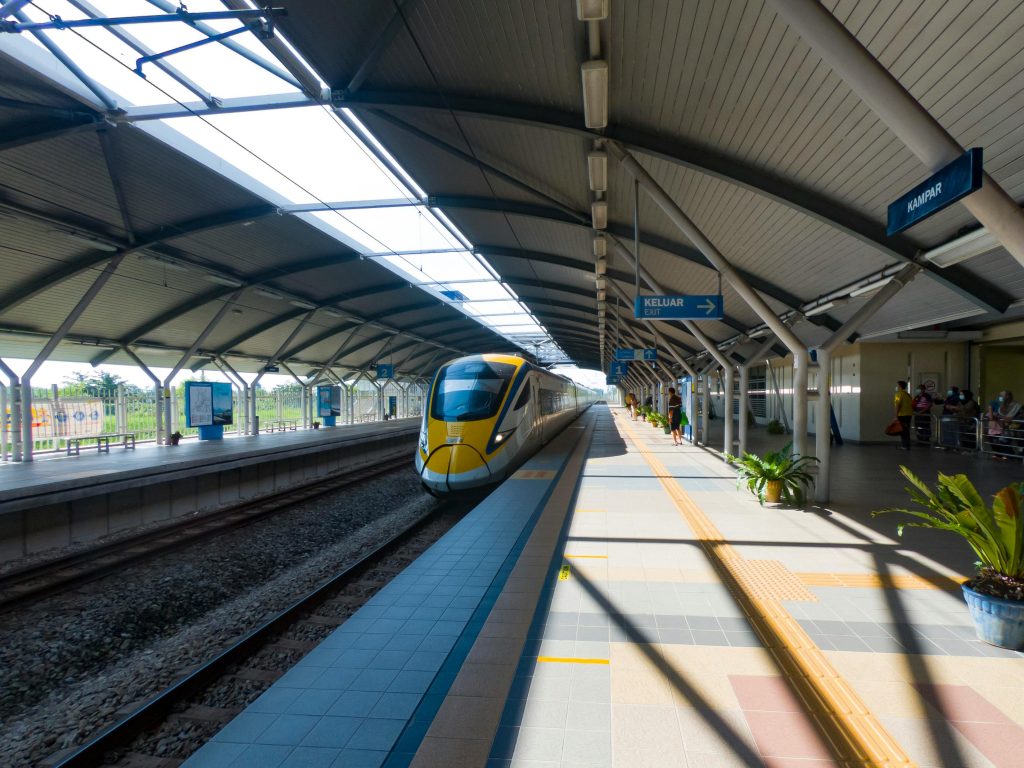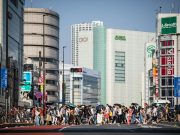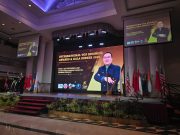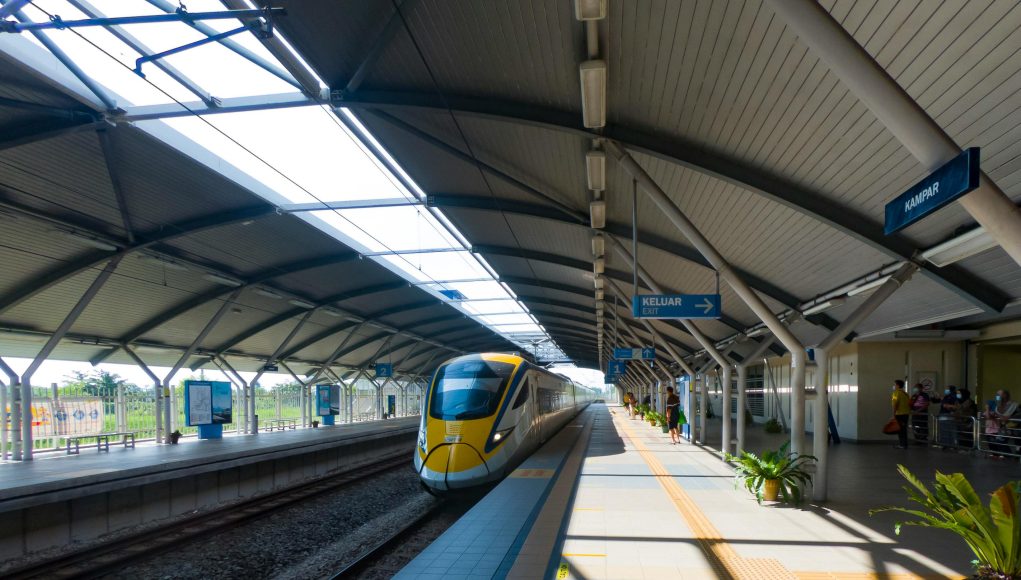
(Singapore, 01.09.2025)Malaysia’s rail network is on the brink of a major transformation with the nearing completion of the Electric Train Service (ETS) project. The new service is set to drastically reduce the journey time between Johor Bahru and Kuala Lumpur, offering a fast, comfortable, and affordable alternative to road travel and even flights. With a projected travel time of just 3.5 hours, the final phase of the project is on track to be completed by the end of 2025.
This development is made even more significant by its planned integration with the Johor Bahru-Singapore Rapid Transit System (RTS) Link, which is expected to be operational by late 2026. This connection will create a seamless rail corridor, allowing travelers from Singapore to reach Kuala Lumpur in just over four hours.
The journey would involve a swift five-minute RTS ride from Woodlands North to Bukit Chagar, followed by a short, sheltered walk to JB Sentral to board the ETS to KL Sentral, bypassing the notorious traffic congestion at the Causeway and on Malaysian highways.
The ETS project, which has been in the works for over a decade, is a massive upgrade to Malaysia’s rail network. National rail operator Keretapi Tanah Melayu Berhad (KTM) has been replacing a 952km single-rail line along the west coast with modern, electrified double tracks.
The latest milestone was the launch of the Kluang extension on August 23, in a ceremony graced by Malaysia’s king and Johor’s ruler, Sultan Ibrahim Sultan Iskandar. This new segment connects the town in central Johor with major cities like Kuala Lumpur, Ipoh, and Butterworth, and will eventually link up with Johor Bahru, completing the final piece of the puzzle.
Economic Catalyst and Modern Travel
Beyond convenience, the new service is seen as a potential economic catalyst. According to a CNA report, transport planning expert Rosli Azad Khan believes the RTS-ETS combination is a highly competitive option for travelers.
“By using RTS and ETS, they can sit back and relax and not have to worry about (traffic congestion),” he said, emphasizing the stress-free nature of the journey. He also noted that the train service offers a direct link to KL Sentral, located in the heart of Kuala Lumpur, unlike the Kuala Lumpur International Airport (KLIA), which is 58km from the city center.
This direct access, combined with lower ticket costs, makes the ETS a compelling alternative to flying, which often includes significant time and money for travel to and from airports.
KTM’s acting chief executive officer, Ahmad Nizam Mohamed Amin told CNA, the ETS could “revolutionize” transport options in the peninsula. The new trains, with a maximum speed of 160km/h, are a considerable improvement over the older diesel trains, which top out at 120km/h.
The journey between Johor Bahru and Kuala Lumpur is expected to take between 3.5 and 4.5 hours. With prices being “more economical compared to flying,” the ETS aims to be an attractive choice for all types of travelers. Compared to driving, the train will save passengers time, making it an appealing option.
Researchers like Nor Aziati Abdul Hamid from the Universiti Tun Hussein Onn’s Centre of Excellence for Rail Industry (ICoE-Rail) also believe the ETS will boost the economies of smaller towns along its route, such as Segamat and Kluang, by linking them to key ports, logistics hubs, and airports, thereby attracting more investment.
Navigating Delays and Building Trust
Despite the widespread optimism, the ETS project has faced significant delays, with the original completion date of 2021 pushed back due to issues with electrical supply, land acquisition, and the COVID-19 pandemic. While Transport Minister Anthony Loke has insisted the project is on track for a phased completion, with the final phase to Johor Bahru set to finish by the end of 2025, some experts remain skeptical.
Wan Agyl Wan Hassan, the principal of Agyl & Partners consultancy, expressed his doubts, stating that the constant delays have eroded public trust. “The real issue, in my opinion, isn’t about the delay themselves, but the way the delays have been communicated,” he said, advocating for greater transparency from the government and KTM.
However, KTM’s Ahmad Nizam maintained that despite past delays, the national rail operator is confident the contractor firm will complete the line extension by the end of 2025.
“We have started operations for … Segamat in March and Kluang we opened on Saturday (Aug 23), and God willing we will fully connect the line to Johor Bahru by the end of the year,” he said.
He added that the transfer between the RTS station at Bukit Chagar and the ETS at JB Sentral will be seamless, with a sheltered walkway and travellators to assist travelers with luggage.
The ETS: A New Chapter, Not a High-Speed Substitute
The completion of the ETS also reignites a long-standing question: is it a viable substitute for the High-Speed Rail (HSR) project between Kuala Lumpur and Singapore? While a Malaysian government official, speaking anonymously, suggested the ETS is being considered a “viable substitute” for travelers interested in rail, most experts agree that the two projects serve fundamentally different purposes.
The HSR, which would have connected the two economic hubs with a 90-minute journey at speeds of up to 350km/h, was designed to compete with air travel and cater to business professionals. It was meant to “stitch Malaysia directly to Singapore and the global economy,” according to Wan Agyl. The ETS, by contrast, is a more pragmatic and domestically-focused service, built for “Malaysians to move from cities to cities at a very affordable and consistent journey.”
While a significant leap forward for domestic travel, the ETS doesn’t offer the same level of direct, high-speed connectivity as the HSR. The four-hour journey, including the RTS link, is a fantastic improvement, but it doesn’t quite match the speed and convenience that would have targeted the business sector.
As Malaysia’s rail network continues to evolve, the ETS stands as a testament to the nation’s commitment to improving domestic mobility. It may not be a one-for-one replacement for the ambitious HSR, but it is a vital upgrade that will benefit millions of people, stimulate local economies, and offer a greener, more relaxing way to travel. With its expected completion, the ETS is set to write a new, exciting chapter in Malaysia’s transportation history.





































